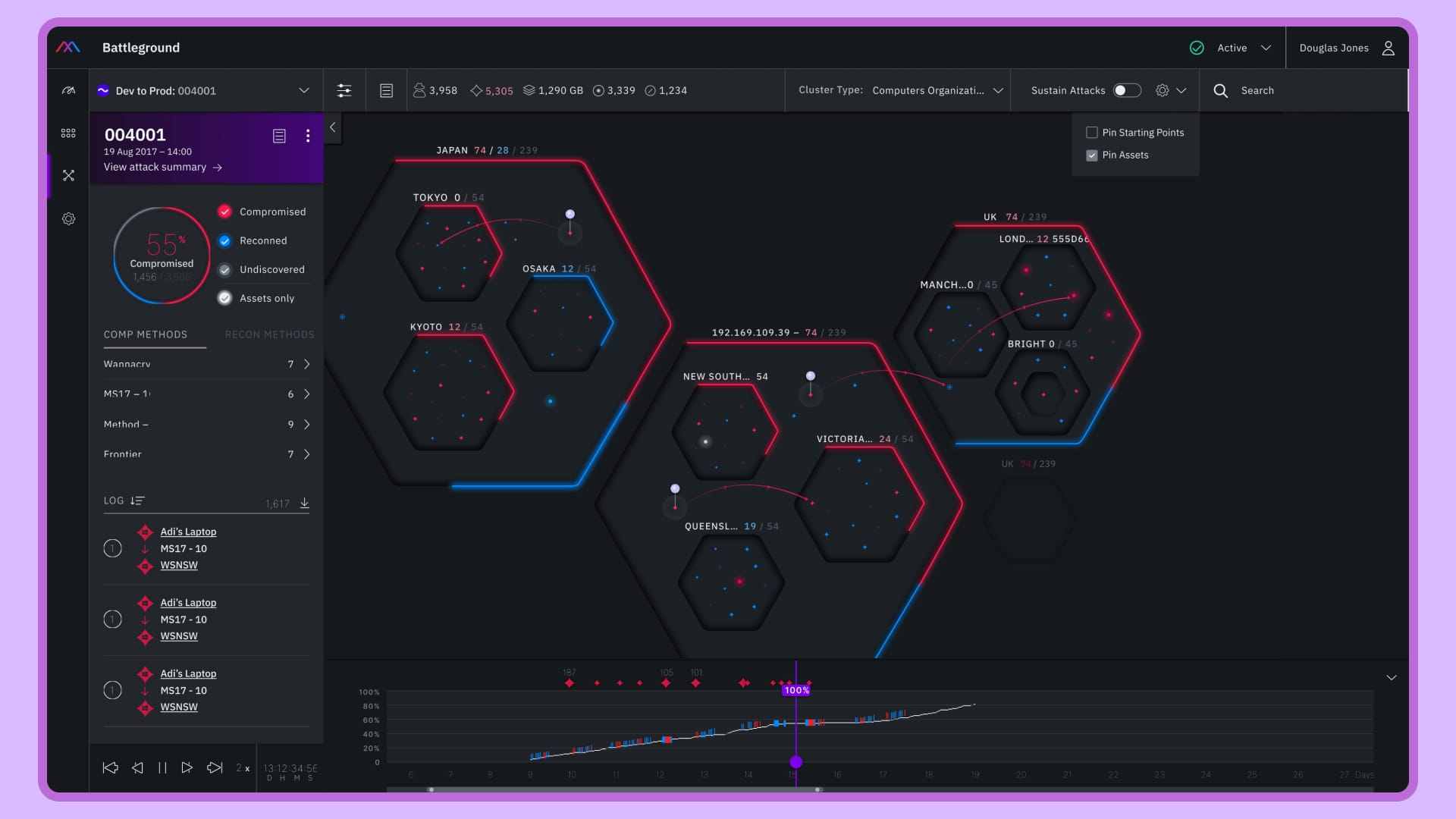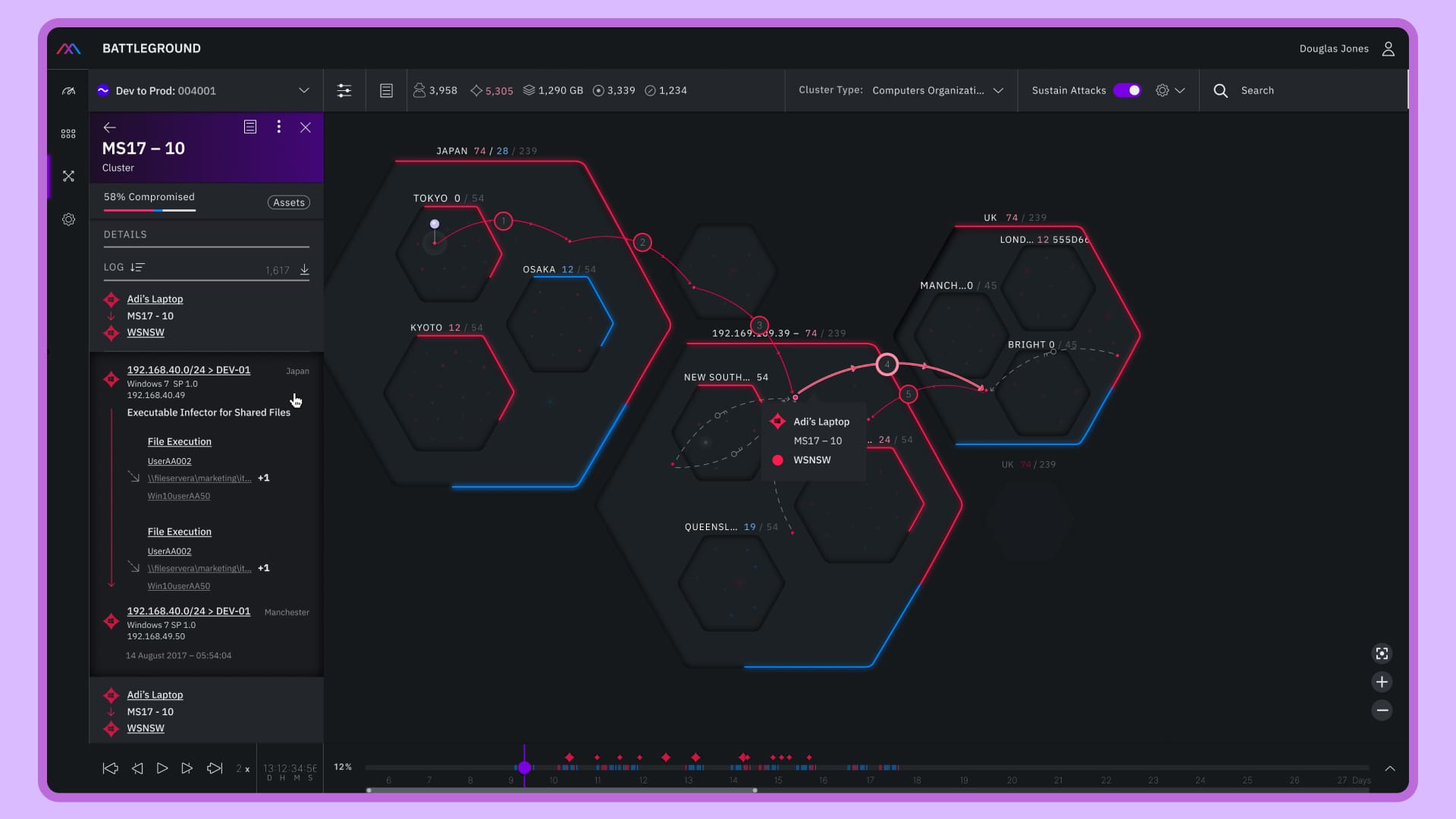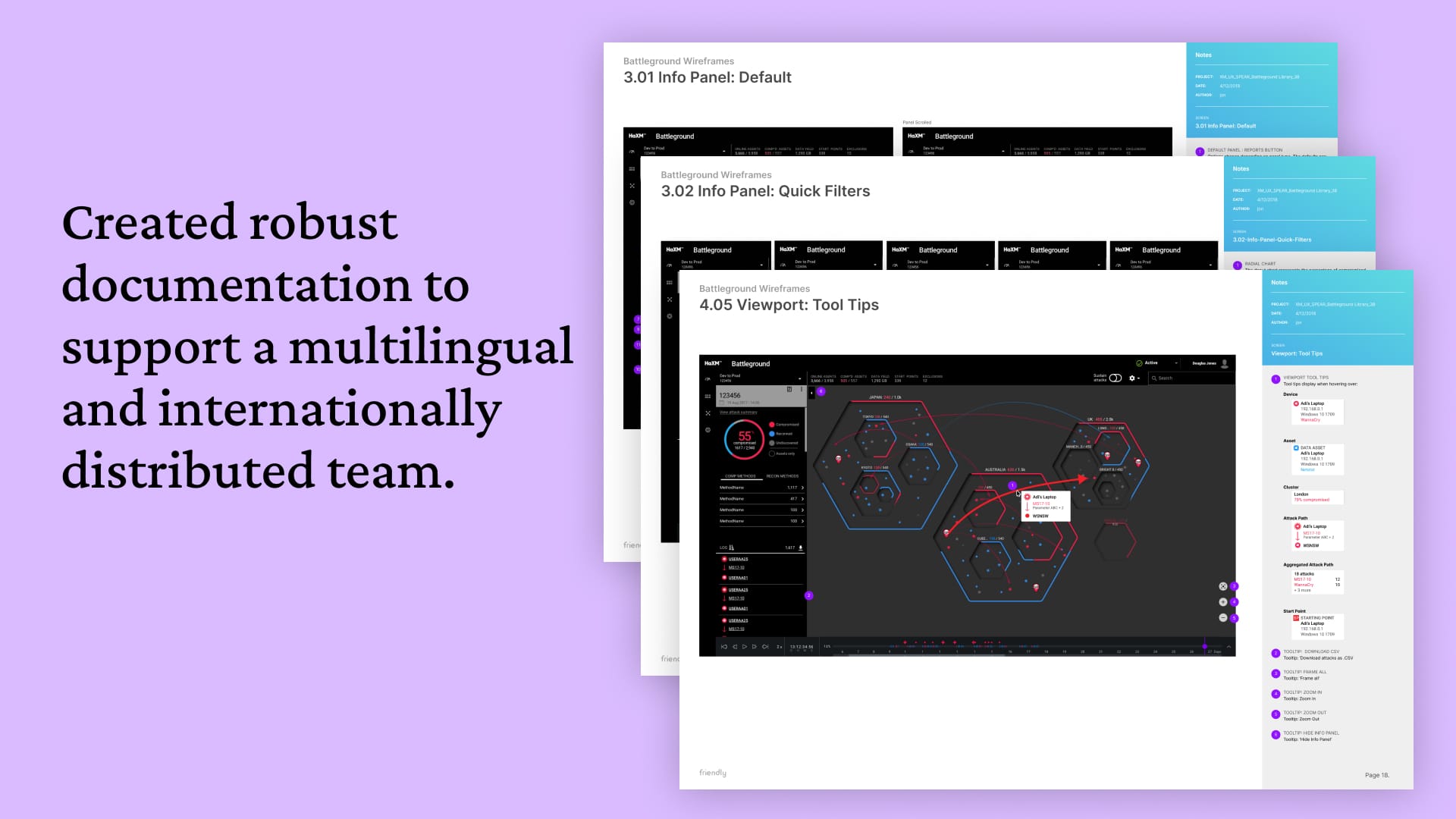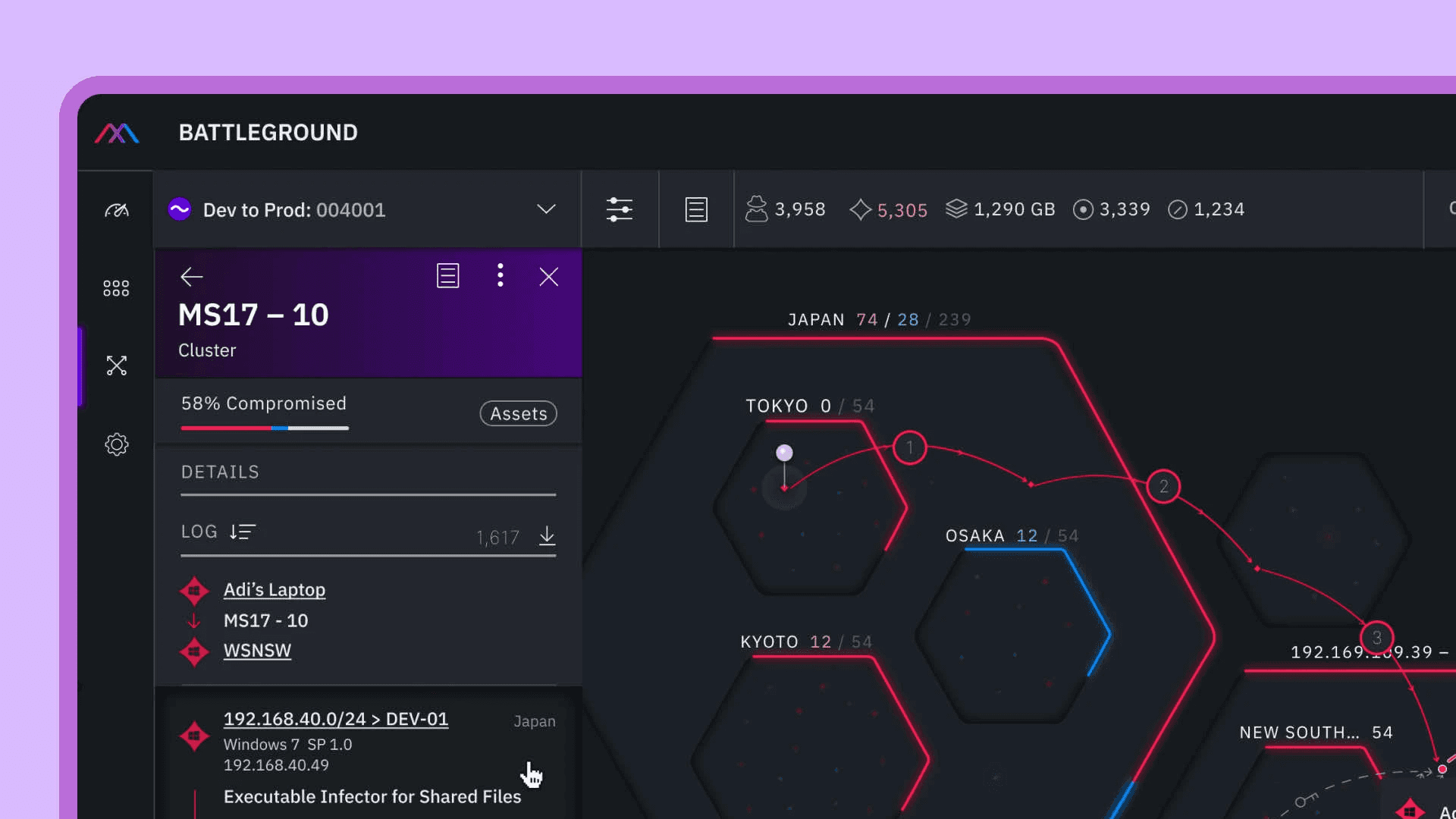
Concept sketching with subject matter experts.
Production: The Battleground displaying a cyber attack simulation.

UI Design: Expanded timeline view with assets pinned.
The Approach
I lead a team of 1 x UI and 2 x UX designers and we collaborated closely with XM Cyber’s development team.
User-Focused Design: I began with desk research and user interviews to gain a deeper understanding of the users' needs and existing workflows. This helped us understand the users' mental models and the visual metaphors they currently use to conceptualise cybersecurity attacks.
Development Collaboration:
Iteratively designed and prototyped, with ongoing refinement based on user and stakeholder feedback.
Collaborated closely with the development team and SME's to ensure technical feasibility as we ideated and designed.
Conducted user feedback sessions to refine and iterate the design.
Result
The platform launched with much commercial, client and user success.
Funding success: The company successfully raised over $32 million in Series A funding.
Industry Awards: The design and innovation of XM Cyber were recognised with the Australian Fintech Award.
Impact on Users: The platform received positive pre and post-launch user-feedback for its design, ease of use and efficiency in helping security teams identify and understand security vulnerabilities.
Visit the XM Cyber website.
Interested in the full journey? Contact me for a full case study presentation.

UI Design: A highlighted attack path being investigated.

Created robust documentation to support a multilingual and internationally distributed team.
